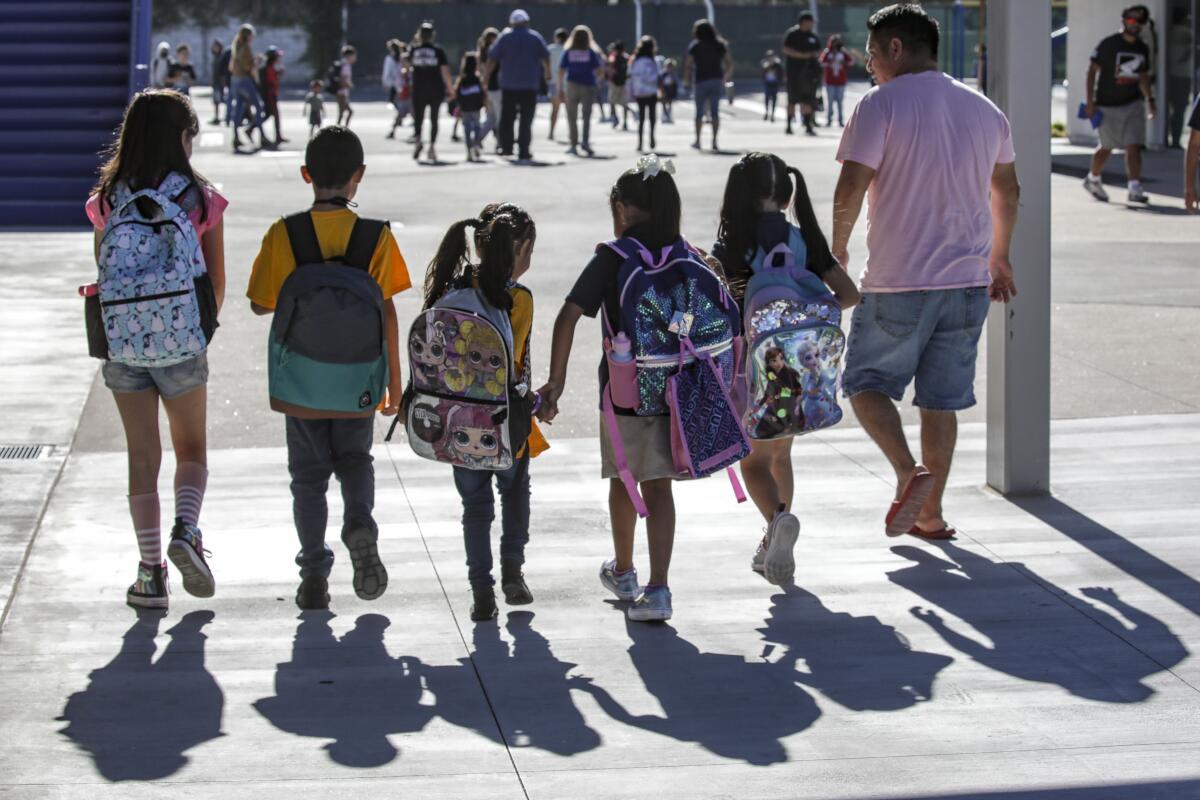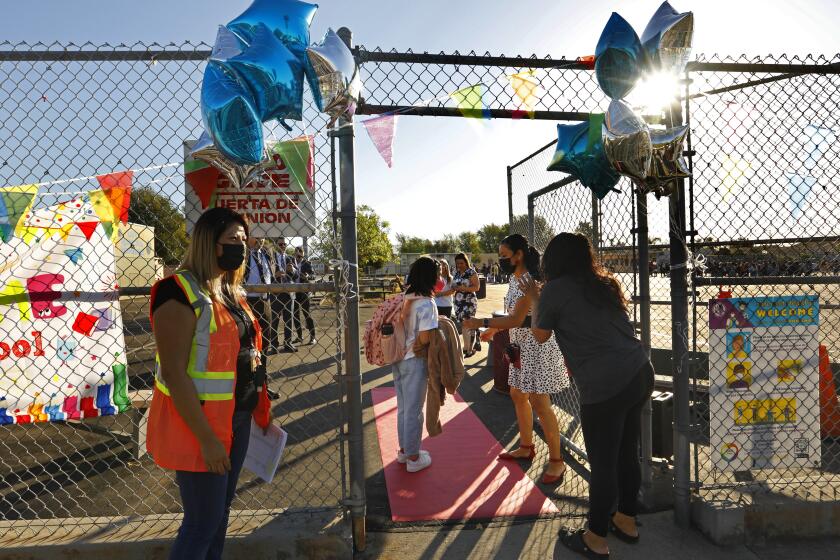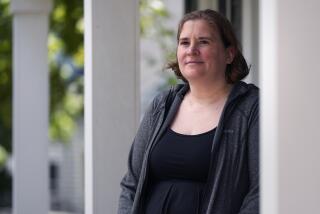Free for all California public school students: At least two meals a day

- Share via
Students at public schools across California can continue to receive at least two free meals a day at school this academic year, thanks to a state initiative launched during the pandemic.
Under California’s Universal Meals Program, all public school students in grades transitional kindergarten through 12, regardless of their parents’ income, are eligible for free breakfast and lunch. The Los Angeles Unified School District is providing even more help, making three free meals a day available to students.
California is the first state to enact free school meals for students served by public school districts, county offices of education and charter schools, whether or not they’re eligible for the National School Lunch Program’s free or reduced-price meals.
The state started a universal meal effort last year, with the federal government picking up most of the tab. This year, state law requires public schools (including charters) to offer all students two “nutritiously adequate school meals” per school day, with state taxpayers footing the bill.
The Los Angeles Unified School District says that more than 81% of its students come from families who qualify for the federal school meal program and may be facing food insecurity. Statewide, an estimated 60% of public school students qualify.
Before the pandemic, L.A. Unified families with incomes between $27,560 and $39,220 had to apply for the National School Lunch Program 30 days before the start of the school year to qualify for subsidized meals. But district officials argue that the eligibility rules don’t account for the city’s high cost of living, blocking too many families from receiving help they really need.
In another pandemic school year, parents hope their children progress in academics, mental health and development. Many remain concerned amid more relaxed COVID measures.
The disruptions caused by COVID-19 led a number of school districts to start offering free meals with no strings attached.
While school campuses were closed during the first pandemic wave in 2020, many school districts continued to provide free meals to students through the Families First Coronavirus Response Act. The legislation allowed the U.S. Department of Agriculture to issue waivers to schools nationwide, making it possible for them to provide free meals to children who weren’t on campus.
L.A. Unified went one step further in partnership with the Red Cross, setting up 60 sites in March 2020 where families could pick up two free meals a day for their kids, regardless of need. When the next school year began that September, the state used its budget surplus and federal pandemic aid to fund free meals for any student, regardless of income level, at all public schools.
At least 2 cases of monkeypox are confirmed in L.A. County children, but health officials say the risk for kids remains low, including in school.
Now, with the state launching the mandatory Universal Meals Program, parents will be sure that their children can get at least two free, full meals at schools daily and not have to incur the expense for preparing breakfast and lunch for them. All students will be automatically enrolled in the program, although students will not be required to participate. Instead, meals will be served to the students who ask for them.
Café LA, L.A. Unified’s food services division, says it currently exceeds USDA requirements for healthy and nutritious meals. Its daily meals are low sodium, contain no trans fats, nitrates or sulfites, and include fresh fruit and vegetables, the district says.
Students recently taste-tested a meatball sub, a turkey, ham and cheese croissant, and a mango smoothie, among other items.
About The Times Utility Journalism Team
This article is from The Times’ Utility Journalism Team. Our mission is to be essential to the lives of Southern Californians by publishing information that solves problems, answers questions and helps with decision making. We serve audiences in and around Los Angeles — including current Times subscribers and diverse communities that haven’t historically had their needs met by our coverage.
How can we be useful to you and your community? Email utility (at) latimes.com or one of our journalists: Jon Healey, Ada Tseng, Jessica Roy and Karen Garcia.
More to Read
Sign up for Essential California
The most important California stories and recommendations in your inbox every morning.
You may occasionally receive promotional content from the Los Angeles Times.














